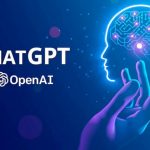Understanding AI Language Models: What They Are and How They Work
Artificial intelligence (AI) is a buzzword that has been thrown around a lot lately. It has taken the world by storm and has revolutionized the way we work, communicate, and interact with machines. One of the significant developments in AI is the creation of AI language models, which have gained immense popularity due to their ability to generate human-like text. In this article, we will discuss what AI language models are, how they work, and their potential applications.
AI Language Model
AI language models are computer algorithms that use machine learning techniques to generate human-like text. These models are based on neural networks that are trained to understand language and generate text that mimics human writing. They can be used to perform various tasks, such as language translation, text summarization, and content creation.
How Do AI Language Models Work?
AI language models are trained on a vast amount of data, usually in the form of text corpora, which can be anything from books, articles, and websites to social media posts and chat conversations. The data is fed into the model, which learns to recognize patterns and relationships between words and phrases. The model then uses this knowledge to generate text that is similar in style and tone to the original data.
One of the most popular types of AI language models is the Transformer model, which was introduced by Google in 2017. The Transformer model uses self-attention mechanisms to learn contextual relationships between words and phrases, allowing it to generate more coherent and natural-sounding text.
Potential Applications of AI Language Models
AI language models have a wide range of potential applications in various industries. They can be used to improve language translation, text summarization, and chatbot interactions. In addition, they can be used to generate content for marketing and advertising purposes, create personalized recommendations, and automate customer service tasks.
However, the use of AI language models has also raised concerns about the potential misuse of these models. For example, they can be used to generate fake news or manipulate public opinion, which can have significant social and political implications.
In conclusion, AI language models have revolutionized the way we generate and interact with text. These models have numerous potential applications in various industries, but their use also raises concerns about their potential misuse. It is essential to consider both the benefits and risks associated with the use of AI language models to ensure that they are used in a responsible and ethical manner.
Also read :
- The Pros and Cons of AI Technology in Content Marketing
- How to Use ChatGPT to Generate High-Quality Blog Content
Top 10 AI Language Models to Watch for in 2023
AI language models have revolutionized the way we interact with technology and have numerous potential applications in various industries. With advancements in technology and continued training, the capabilities of these language models are rapidly expanding. Here are the top 10 AI language models to watch for in 2023:
GPT-4
The successor to OpenAI’s highly popular GPT-3 model, GPT-4 is expected to have even greater language capabilities and improved performance.
T5
Introduced by Google in 2019, T5 is a transformer-based model that has shown impressive results in natural language processing tasks.
BERT
Bidirectional Encoder Representations from Transformers (BERT) is a transformer-based model that has been highly effective in natural language understanding tasks.
RoBERTa
A variation of the BERT model, RoBERTa has been shown to outperform its predecessor in numerous natural language processing tasks.
ELECTRA
The Efficiently Learning an Encoder that Classifies Token Replacements Accurately (ELECTRA) model uses a unique pre-training method that has shown promising results in various language tasks.
ALBERT
A Lite BERT (ALBERT) model, is a smaller and faster version of BERT that has been shown to achieve similar results.
XLNet
A novel approach to language modeling, XLNet uses permutation-based training to model the probability distribution of a sequence of words.
UniLM
The Universal Language Model (UniLM) can be used for various natural language processing tasks, including language generation, question answering, and text classification.
CTRL
Introduced by Salesforce, the Conditional Transformer Language Model (CTRL) is a highly versatile model that can be fine-tuned for various language tasks.
Megatron
Developed by NVIDIA, Megatron is a highly scalable transformer-based model that has achieved impressive results in various natural language processing tasks.
These AI language models represent some of the most promising developments in natural language processing, and their continued advancements will shape the future of human-machine interaction.
FAQ:
AI language models are trained on large amounts of data, which they use to recognize patterns and relationships between words and phrases. They then use this knowledge to generate text that mimics human writing.
AI language models can be used for language translation, text summarization, content creation, and more. They have numerous potential applications in various industries.
The Transformer model is a popular type of AI language model that was introduced by Google in 2017. It uses self-attention mechanisms to learn contextual relationships between words and phrases.
No, AI language models are not perfect and can make mistakes. However, with continued training and improvements, they are becoming increasingly more accurate.
Yes, AI language models can be used to generate fake news or manipulate public opinion, which is a growing concern in the field of AI.
AI language models can be used to generate content for marketing and advertising purposes, create personalized recommendations, and automate customer service tasks.
The use of AI language models may result in job displacement in certain industries, but it can also create new job opportunities in the field of AI and technology.
Some challenges associated with the use of AI language models include ethical concerns, the potential for misuse, and the need for continued training and improvements.
The future of AI language models is promising, with continued advancements in technology and increased use in various industries. However, it is important to consider the potential ethical implications and ensure responsible use.























